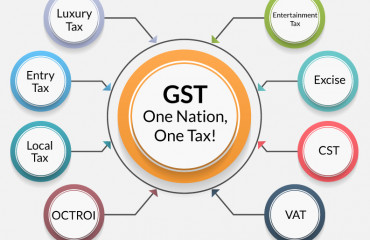
My last column on India’s ill-fated index of industrial production (IIP) received several comments and questions. There appears to be a broad consensus that the IIP, as it exists today, is broken. Decision-makers in the world of finance and in the world of public policy are unable to rely on it.
My last column on India's ill-fated index of industrial production (IIP) received several comments and questions. There appears to be a broad consensus that the IIP, as it exists today, is broken. Decision-makers in the world of finance and in the world of public policy are unable to rely on it.
At the same time, opinion remains divided on whether it is worth fixing, and how that should be attempted. I think we can all agree that the country needs more high-frequency statistical products, not less. Since India—like most other large economies—already has an international commitment to produce a high-frequency industrial index, it makes sense to try and fix the IIP. That does not, however, mean other indices shouldn't be developed.
As I had argued earlier, India also needs a reliable gauge of services activity, given that the services sector accounts for more than half of India's economic output. Analysts typically look at disparate sources of data (such as broadband penetration, loans to services firms, etc) to gauge the level of activity in the services sector. But there is great value in having a coherent summary measure for all services, just as there is great value in having a coherent summary measure for industrial activity. We should not have to rely on a small-scale survey (PMI) to gauge the level of services activity in a large and diverse economy such as ours.
A dynamic business register that is able to capture key attributes of all firms operating across sectors can help produce better indices for tracking both industrial and services activity. Think of the register as an official 'JustDial' for businesses, containing registration, location, and product level details of each firm.
Such a database can help fill large gaps in India's statistical system. It can help official statisticians estimate the share of each sector and state in national output much more accurately. Today, they use a 'jugaad' method, using aggregate data on value-addition from the MCA-21 database and the sectoral and state shares reported by the Annual Survey of Industries (ASI) to estimate the gross value added (GVA) in each sector and state.
For most firms, the MCA-21 database doesn't provide the classification details required to slot them into different sub-sectors. It also doesn't provide accurate information on whether a firm actually exists or has shut down. So official statisticians use a number of debatable assumptions to arrive at the estimates of value-added for companies that have not reported their financial details (but are still marked 'active' in the database).
The ASI has its own share of problems. The biggest problem is that the list of factories in the ASI frame is outdated. The list is obtained state-wise from the inspectorate of factories, and the coverage varies across states. This is a well-recognized problem and the official statistical machinery has tried to go beyond the inspectorate lists in recent years by including additional factories represented in the state-level business registers. But these business registers are not dynamic in nature, and hence do not capture either the birth or death of firms and factories.
A comprehensive and dynamic business register can help solve many of these issues. By getting different databases to talk to each other—through a common business registration id—it is possible to develop a cross-validated database capturing key details of all business activity across the country. It can help revamp the frame for surveys such as ASI and IIP. It can also help launch new surveys, such as on service sector activity. Most importantly, it can improve the accuracy of India's gross domestic product (GDP) and states' gross state domestic product (GSDP) figures.
Over the past two decades, a number of statistical committees and expert bodies have reiterated the need to build a reliable and comprehensive firm-level database. The 13th Finance Commission even allocated dedicated funds to help build business registers. This led to a one-time effort in developing such registers based on registration details recorded under seven different Acts (including the Factories Act, Companies Act, and the Shops and Commercial Establishment Act). But these registers haven't been updated in most states. Only Rajasthan seems to have taken this process forward by mandating that all new firms would need to include a business registration number while applying for power or water connections, allowing it to update the register.
Such efforts need to be scaled up and replicated in other states. With most registration authorities digitizing their data sets, it is possible to develop a common firm-level database today that cuts across departmental silos. Apart from improving statistical products, such a database will also help improve overall governance.
For the private sector, the availability of such a database will improve the ease of doing business, allowing all stakeholders to have a shared and clear view on the pace and nature of economic activities taking place in each part of the country.
Goods and services tax (GST) data can be an important building block for such a database, since it includes product-level and location details of firms. Months after the new tax system was introduced, the finance ministry published a detailed chapter in the 2017-18 Economic Survey based on an analysis of GST data. It is a national tragedy that even after five long years, we haven't learnt much else from the GST data.
